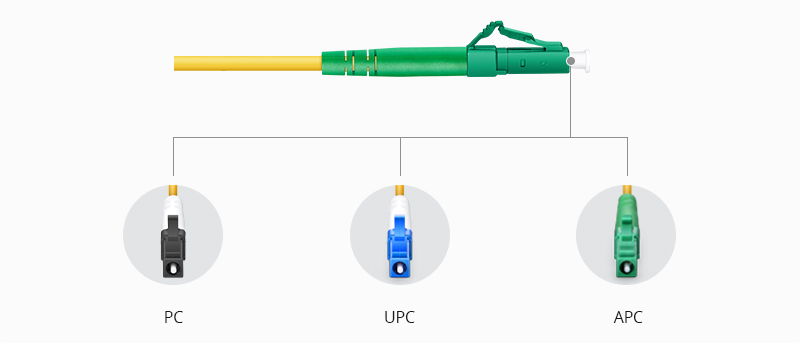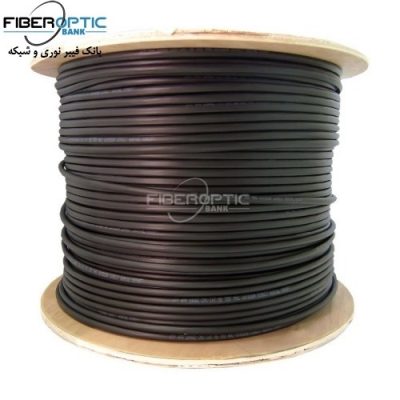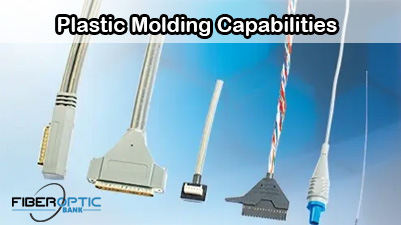Fiber Connector Types
Fiber optic connector that comes in various configurations and types is considered as an important component for the fiber optic cable. Generally speaking, different fiber cable connector types can be categorized according to different standards like the utilization, fiber count, fiber mode, transmission method, the transmission media, the boot length, the polishing type and the termination way, etc. Follow this article to classify fiber connector types.
Utilization: Fiber Connectors Connect with Adapter Panel
The following fiber connector types, such as LC/SC/MTP/MPO/ST fiber optic connectors, require an adapter panel when connecting. Fiber cables with these optical connector types are usually used in data centers, telecom rooms, enterprise networks and so on.
LC Connector
A Lucent Connector (LC), as one SFF (small form factor) connector, possesses a 1.25 mm ferrule. The small footprint design gives these fiber optic connectors huge popularity in datacoms and makes them more ideal for high-density applications. Many tend to move to high-efficiency cabling with LC fiber connectors nowadays. LC fiber optic connector is considered the most commonly-used connector at present.
SC Connector
SC fiber connector was the first connector chosen for the TIA-568 standard and is a snap-in connector that latches with a simple push-pull motion. “SC” stands for “Square Connector” due to the “square-shaped” connector body. It adopts a 2.5mm ferrule, which is twice the size of the previous LC connector. SC fiber optic connector is ideally suited for datacoms and telecom applications including point to point and passive optical networking. Due to its excellent performance, fiber optic SC connector remains the second most common connector for polarization maintaining applications.
MTP/MPO Fiber Connector
Unlike the previous two fiber optic conneceors, the MTP/MPO fiber connector is a multi-fiber connector and larger than other connectors, which combines fibers from 12 to 24 fibers in a single rectangular ferrule. It’s often used in 40G and 100G high-bandwidth optical parallel connections. The MTP/MPO fiber connectors are complicated due to the key-up and key-down, male and female issues. You can refer to our white paper Understanding Polarity in MTP/MPO System to have a better understanding.
ST Connector
ST (Straight Tip) fiber optic connector was created and licensed by AT&T shortly after the arrival of the FC type. The ST optic connector holds the fiber with a ceramic, spring-loaded 2.5mm ferrule that stays in place with a half-twist bayonet mount. They are usually used in both long and short distance applications such as campuses and building multimode fiber applications, corporate network environments, as well as military applications.
FC Connector
“FC” refers to the Ferrule Connector. FC fiber optic connector was the first optical fiber connector to use a ceramic ferrule. Unlike the plastic-bodied SC and LC connector, it utilizes a round screw-type fitment made from nickel-plated or stainless steel. The FC fiber optic connector end face relies on an alignment key for correct insertion and is then tightened into the adaptor/jack using a threaded collet. Despite the additional complexity both in manufacturing and installation, the FC connectors still provide the choice in precision instruments such as OTDRs, as well as the choice for single mode fiber. It was initially intended for datacoms and telecoms applications but was used less since the introduction of the SC and LC fiber optic connectors. The usage of both ST and FC connectors have declined in recent years.
The abovementioned five fiber optic connectors are the most commonly used ones, which are introduced based on their popularities from wide to usual. The figure below shows the different connector style:
MT-RJ Connector
Mechanical Transfer Registered Jack (MT-RJ) connector is a duplex connector that uses pins for alignment and has male and female versions. Constructed with plastic housing and provide for accurate alignment via their metal guide pins and plastic ferrules. Compared to a standard phone jack, the size of MT-RJ connector is slightly smaller, making it easier to connect and disconnect. In addition, MT-RJ fiber optic connector provides a lower termination cost and greater density for both electronics and cable management hardware compared to other singer-fiber terminations.
MU Connector
Like a miniature SC with a 1.25mm ferrule. Featuring a simple push-pull design and compact miniature body, the MU fiber optic connector is used for compact multiple optical connectors and a self-retentive mechanism for backplane applications. You can get a customized high power MT-RJ/MU fiber optic connector in FS.
DIN Connector
The DIN connector is round with pins arranged in a circular pattern. It encompasses several types of cables that plug into an interface to connect devices. Typically, a full-sized DIN connector has three to 14 pins with a diameter of 13.2 millimeters. It is applied for PC keyboards, MIDI instruments, and other specialized equipment.
E2000 Connector
The E2000 Connector is a push-pull coupling mechanism with an automatic metal shutter in the connector as dust and laser beam protection. One-piece design for easy and quick termination, E2000 fiber optic connector is used for high safety and high power applications.
Utilization: Fiber Connectors Connect Without Adapter Panel
Compared to the above fiber optic connector types, Rosenberger Q-RMC and NEX10 connector adopt push-pull quick locking mechanism, which can realize quicker connection without using an adapter panel. They are designed for harsh environment use.
Rosenberger Q-RMC Connector
Q-RMC, short for Rosenberger Multifiber Connector, is a new and robust industrial connector with the multi-fiber MT ferrule of the MTP®/MPO connector that can hold 24 fiber cores. This kind of very small form factor connector includes a push-pull closing mechanism, which makes the optic connector to be connected simpler and quicker even in tight areas, thus reducing installation times and the associated costs. The Q-RMC connector fulfills the requirements for protection class IP67, so it is waterproof, dustproof and resistant to corrosion. What’s more, the Q-RMC connector is suitable for use in areas with extreme temperatures thanks to its’ operating and storage temperature is up to -40~80℃. So, fiber cables with Q-RMC connector can be used for industrial site, mine field, mobile communication (FTTA), 5G Base Station, broadcast, smart grid cabling and so on.
Rosenberger NEX10 Connector
The Rosenberger NEX10 connector is suitable for an outdoor harsh environment, and it is characterized by compact size design plus waterproof, dustproof and anti-corrosion. This connector type supports screw-type and a push-pull locking mechanism. The push-pull quick lock helps in achieving solid installation and easy removal without any tools. For the screw type plug, there is a screw-locking mechanism, ideal for the plug and socket keeps firm connection. Nowadays, FS introduces the industrial fiber optic patch cable with Rosenberger NEX10 connector, and its’ operating & storage temperature for connectors & outdoor cables lie between -40~80℃, which is often used in industrial site, Mine field, small sells, distributed antenna systems(DAS), In-building architecture, and MIMO.
Both single mode and multimode Q-RMC/NEX10 connectors are available in FS. And you can also choose optical fiber type, cable jacket according to your needs to get a customized industrial fiber optic cable.
Fiber Count: Simplex vs Duplex Fiber Connectors
A simplex connection means signals are sent in one direction—a signal is transmitted through two simplex connectors and a simplex fiber cable from device A to device B, which cannot return from device B to device A via the same route. Contrariwise, the revised transmission can be achieved through duplex connectors and duplex fiber cable, which is called a duplex connection. In addition, a simplex fiber optic connector is often connected with one strand of glass or plastic fiber, while the duplex fiber optic connector needs to connect with two strands of fibers.
Fiber Mode: Single Mode vs Multimode Fiber Connectors
Single mode fiber allows only one light mode to pass through at a time, while multimode fiber can propagate multiple modes at a time. Diversity has an impact on single mode fiber connectors and multimode fiber connectors on account of the combination with the corresponding type of optical fibers. However, with technologies getting advanced, fiber optic connectors like SC, LC, and FC, provided by fiber optic connector factories are compatible with single mode and multimode fiber cables.
Boot Length: Standard Boot vs Short Boot Connectors
As for the boot length, there are standard boot structure and short boot structure. A standard boot can protect the cable and the connector from being damaged, wires being dislodged from the connector body, etc. While a short boot has the same function, it is distinguished by a shorter boot structure. For places where there is limited space for connector, short boot cables can be the ideal choice. The short boot structure design can make the cable easily pass through the narrow space without sacrificing performance, making the installation and maintenance of the fiber optic cables more efficient.
Polishment: APC/PC/UPC Fiber Optic Connectors
According to the polishing type, optical fiber cable connectors can be divided into three types: PC, UPC, and APC connectors. The color code provides a convenient method to identify these three types of connectors: PC’s color code is black, the color code for the APC fiber connector is green, and the UPC’s connector is blue. The structure and the performance of the three fiber optic connectors also vary, which reflects on the values of insertion loss and return loss. PC vs UPC vs APC, this article shed light on these connector types and their differences for you.
Termination: Field-terminated vs Pre-terminated Fiber Connectors
Field termination, as its name implies, is to terminate the end of the fiber in the field. The procedure includes strip the cable, prep the epoxy, apply the connector, polish, inspect and test for the connection, requiring not only a large number of tools but also skilled technicians to conduct the termination.
Factory termination, also called factory pre-termination, refers to cables and fibers terminated with a connector in the factory. The pre-terminated cables come in pre-measured lengths with the fiber optic connectors already installed with factory-level precision and quality assurance. Reducing the cumbersome process and tools, factory pre-terminated solutions are easier to install and require less technical skills.
FAQs
Do single mode connectors work on multimode cables?
Yes. you can use single mode connectors on multimode, but not the other way around.
If I have an SC connector installed and find that what I need is LC type, how can I do?
In this kind of situation, a common solution is that you can purchase an SC-SC coupler, then purchase a pre-terminated SC to LC patch cable. Adapters are also available like LC-LC or LC-SC.
What types of fiber optic connectors are available on the market?
The common types of fiber optic connectors are LC, SC, MTP/MPO, ST, and FC. LC connector, as a main fiber optic connector, tends to be the most preferred one due to its compact size, high performance, and ease of use. In addition, for multi-fiber connectors, the MTP/MPO connectors are also gaining popularity for 40G and 100G data transmissions.
Source: community.fs
Related products...
fiber-optic-cable
fiber-optic-cable
fiber-optic-cable




















[ratings]